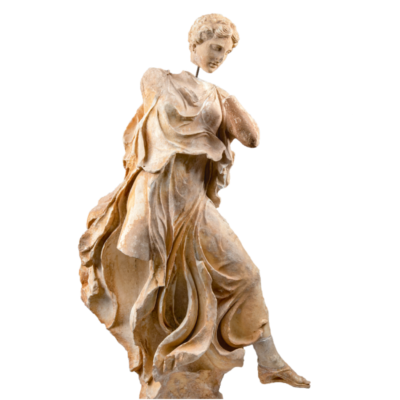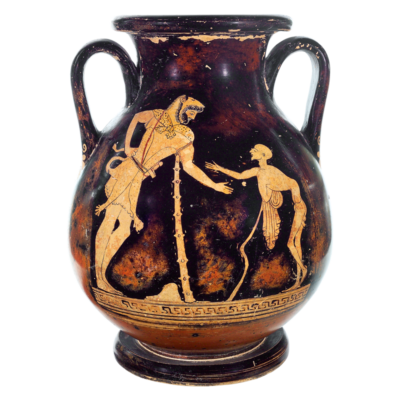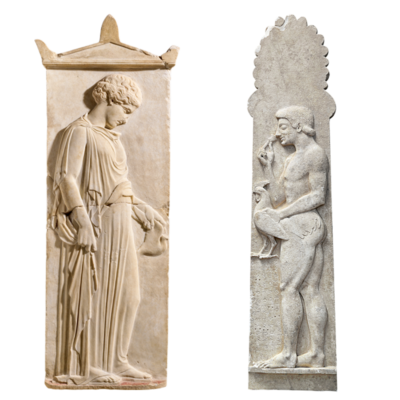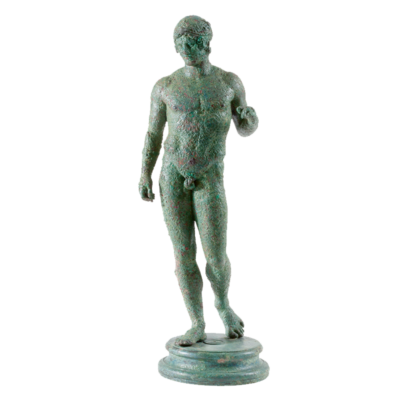The Hunter

Clay red-figured neck amphora.
Provenance unknown. 400 – 375 BC. National Archaeological Museum Α 15113.
© Hellenic Ministry of Culture and Sports/National Archaeological Museum/H.O.C.RE. D. Photograph: Irini Miari.
Clay red-figure amphora from the Classical Period, depicting Atalanta.
Atalanta is depicted seated in the center of the scene, surrounded by a group of hunters, before or after the Calydonian boar hunt.
The angiographer rendered the figure of the mythical athlete and huntress with masculine robustness, a broad chest, and rudimentary female breasts, thus wanting to indicate her robust, almost masculine physique, which, according to mythological tradition, did not obscure her beauty at all.
SEARCH & LEARN
• What is an angiographer?
• Why was Atalanta known in mythology? What were her qualities?
• Find out more vases with representations depicting the heroine’s physical vigor.
DID YOU KNOW THAT
• Atalanta was the only heroine in mythology who could beat men in running, wrestling, and archery.
TOPICS FOR DISCUSSION
• We know that Atalanta’s external beauty was renowned, but the artist rendered her form with an almost masculine physique. What could this signify?
• What is the contribution of Atalanta and her physical superiority over men in the mythological universe of the ancients?




